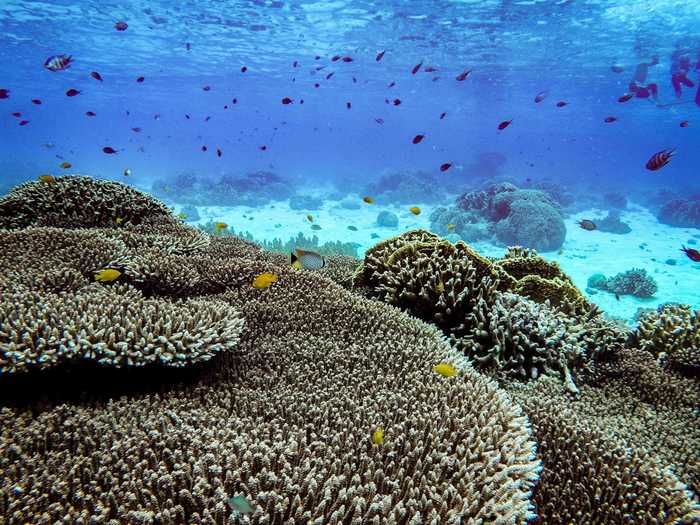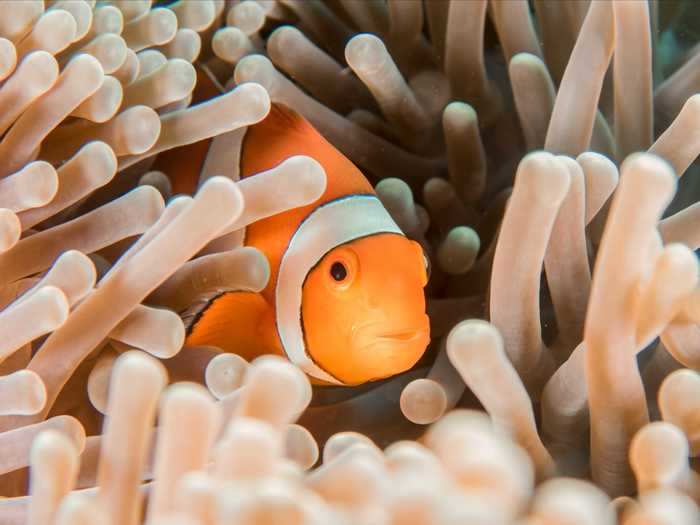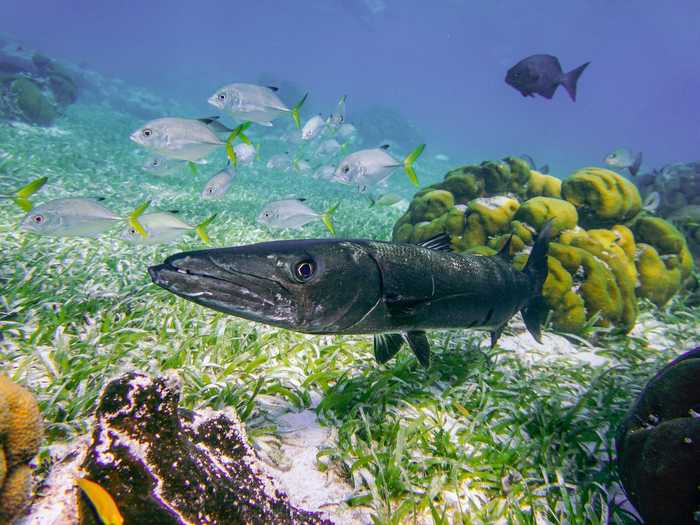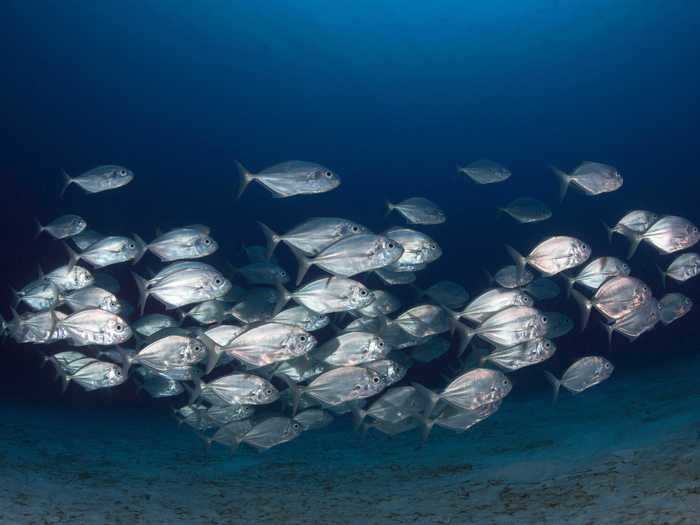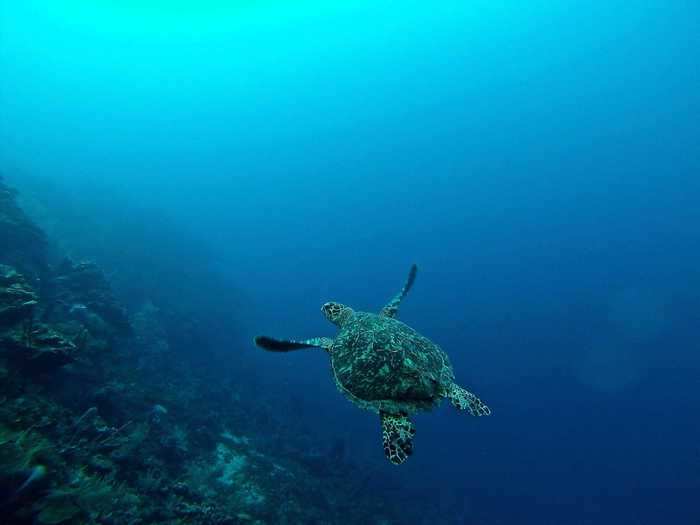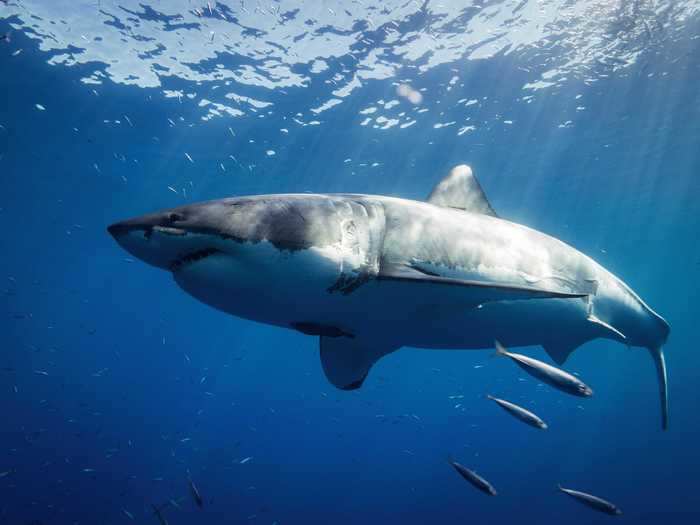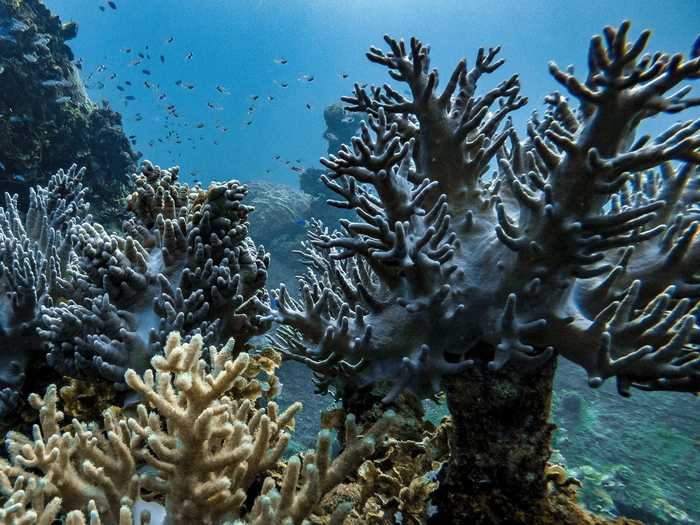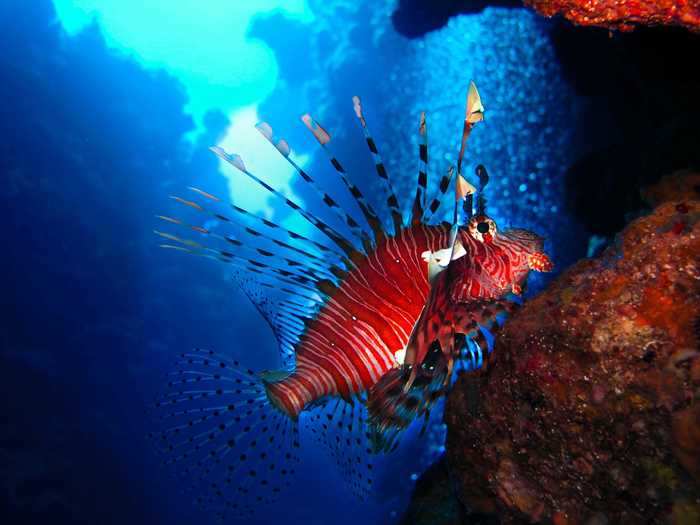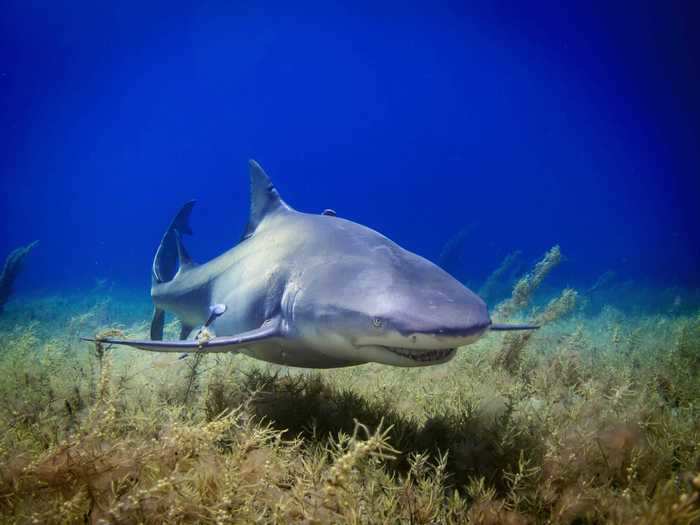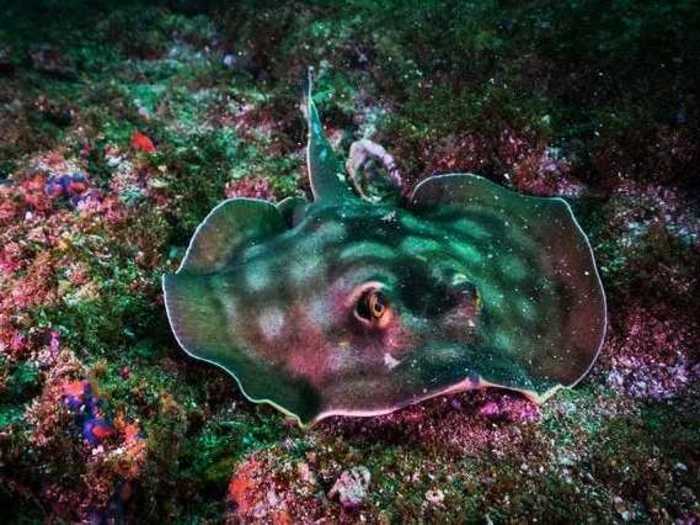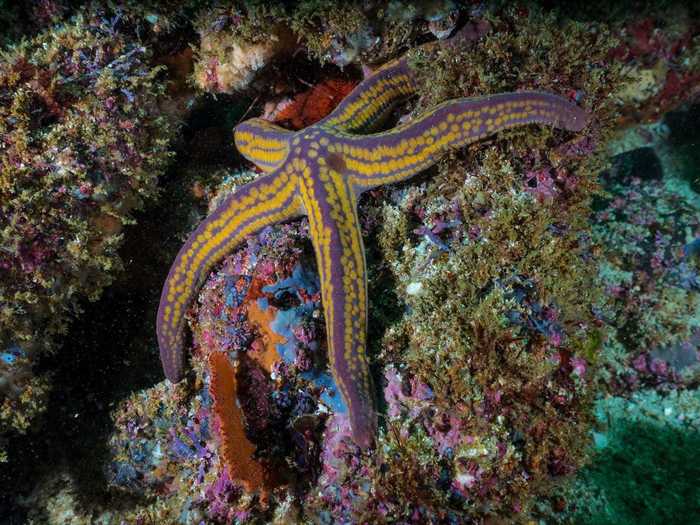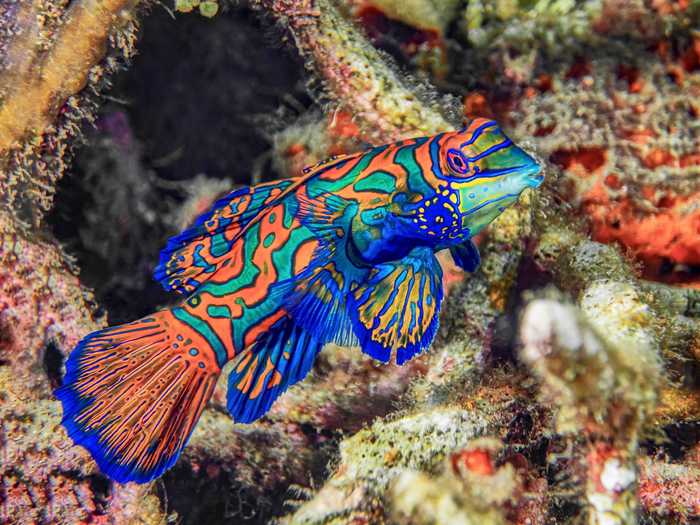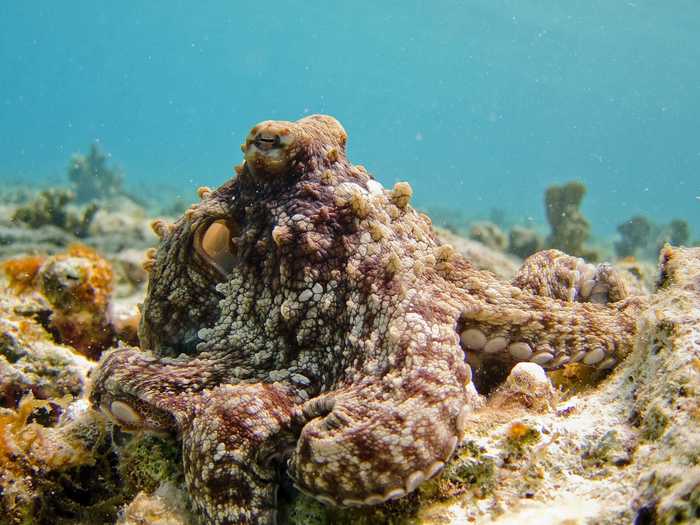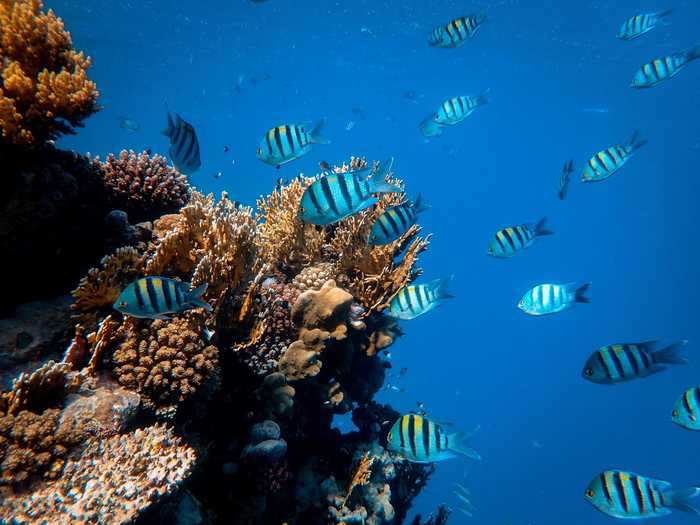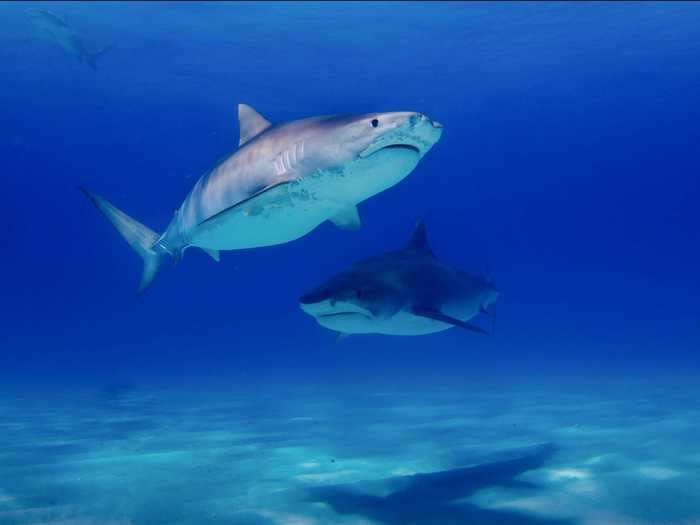Mandarin fish in Lembeh Strait, Indonesia.Dorothea Oldani/Unsplash
- World Oceans Day is celebrated internationally on June 8.
- It was created as a day for countries around the world to focus on preserving the world's oceans.
- To mark World Oceans Day, vacation site My Late Deals compiled a series of photos to illustrate underwater beauty that needs protecting.
World Oceans Day was proposed at the United Nations Conference on Environment and Development, also known as the Earth Summit, in Rio de Janeiro, Brazil, in 1992.
However, it wasn't until 16 years later, in 2008, that June 8 was recognized internationally as World Oceans Day.
This year, My Late Deals, a vacation comparison site, compiled a series of stunning underwater shots and shared them with Insider.
"These images give us the perfect opportunity to reflect upon the breathtaking wildlife and reefs that call them home, and remind us why we should be working so hard to protect them," said Chanelle McGarry, a spokesperson for the site.
Take a look at stunning underwater photos from around the world that will make you want to protect the blue planet this World Oceans Day.
The Philippines' Sumilon Island Marine Sanctuary, pictured below, is known for its many species of hard and soft coral.
Corals and reef fish at Sumilon Island, Cebu, Philippines.
Hitoshi Namura/Getty Images
Coral reefs in the Philippines are the second largest in Southeast Asia, and 98% of Philippine reefs are deemed to be at risk.
Whale sharks are the largest sharks, and they are currently listed as an endangered species.
A whale shark in the Maldives.
Sebastian Pena Lambarri/Unsplash
According to World Wildlife, "Whale sharks are highly valued on international markets. Demand for their meat, fins and oil remains a threat to the species, particularly by unregulated fisheries. They are victims of bycatch, the accidental capture of non-target species in fishing gear. And whale shark tourism presents a threat to the species as it can interrupt their feeding and sharks can be injured by boat propellers."
Spinner dolphins can spin multiple times in one leap, reaching up to 10 feet above the surface, according to National Geographic.
A school of spinner dolphins near Molokini Island, Hawaii.
Yale Cohen/Unsplash
According to National Geographic, "The leaping and spinning likely serve several purposes, including the removal of irksome remoras, fish that latch on to eat parasites."
But biologists also believe the jumping and spinning is used for communication. Different moves might signal "Let's go" or "I find you attractive," according to National Geographic.
Clownfish are mainly found around stinging anemones. They have developed a special immunity to the stings.
Orange and white clownfish hiding in sea anemone, Indonesia.
Sebastian Pena Lambarri/Unsplash
According to Live Science, "The pair forms a symbiotic relationship. The anemone provides protection and leftovers for the clownfish, while the clownfish brings food to the anemone and preens its host, removing parasites."
Barracudas are one of the fastest fish in the sea and can swim up to an estimated 36 miles per hour.
A barracuda in Belize.
Wouter Naert/Unsplash
According to Oceana, "Barracudas are naturally inquisitive. Because they hunt mainly by sight, barracudas sometimes attempt to steal fish from spear fishers or approach divers, mistaking the glint of a diving knife as a shiny fish. Despite this behavior, barracudas rarely attack humans unprovoked."
Fish swim together in shoals to protect themselves from predators.
A shoal of fish near Amed Beach, Indonesia.
Milos Prelevic/Unsplash
Shoals and schools of fish are two different things. According to Jstor Daily, "A shoal is a looser group, sometimes consisting of different species that hang out together (often temporarily) but are not organized. Schools are highly structured with coordinated movements and a common direction."
Six of the seven sea turtle species are deemed threatened, endangered, or critically endangered, according to National Geographic.
A turtle swimming in Roatán, Honduras.
Erin Simmons/Unsplash
Great white sharks are the largest predatory fish on Earth. They grow to an average of 15 feet long.
A great white shark at Guadalupe Island, Mexico.
Gerald Schömbs/Unsplash
They are currently listed as a vulnerable species.
Chuuk Lagoon in the central Pacific Ocean is surrounded by a huge barrier reef.
Chuuk Lagoon's coral reefs.
Marek Okon/Unsplash
The lagoon is home to dozens of Japanese and American ships and aircraft that sank during World War II.
Lionfish are a carnivorous species of fish native to the South Pacific and Indian Oceans.
A lionfish in Dahab, Egypt.
Nariman Mesharrafa/Unsplash
However, they are now an invasive species of fish in the Atlantic Ocean. According to Ocean Service, "Scientists fear that lionfish will kill off helpful species such as algae-eating parrotfish, allowing seaweed to overtake the reefs."
Lemon sharks are recognizable by a distinct yellow tint to their skin.
A lemon shark in the Bahamas.
Gerald Schömbs/Unsplash
According to Oceana, "The lemon shark is targeted by commercial and recreational fisheries throughout its range and is listed as Near Threatened by the IUCN Red List. The shark's fins and meat are highly sought after to be sold on international markets. The thickness of the lemon shark's skin also makes it ideal for the production of leather."
Many species of stingrays are endangered.
A stingray in Puerto Vallarta, Mexico.
Francisco Jesús Navarro Hernández/Unsplash
Sea stars can live up to 35 years.
A sea star in Puerto Vallarta, Mexico.
Francisco Jesús Navarro Hernández/Unsplash
According to National Geographic, "There are some 2,000 species of sea star living in all the world's oceans, from tropical habitats to the cold seafloor. The five-arm varieties are the most common, hence their name, but species with 10, 20, and even 40 arms exist."
Mandarin fish are beautiful, but don't be fooled: Their poison and smell keeps predators away.
Mandarin fish in Lembeh Strait, Indonesia.
Dorothea Oldani/Unsplash
Mandarin fish grow to just 6 centimeters in length. Rather than scales, they are coated in mucus.
Octopuses have a range of tricks to thwart attackers.
An octopus in Bonaire, in the Caribbean Sea.
Vlad Tchompalov/Unsplash
The coral reefs found in the Red Sea are known for their extraordinary heat tolerance and resistance to rising sea temperatures.
School of fish in the Red Sea, Egypt.
Francesco Ungaro/Unsplash
Though reefs around the world have suffered bleaching due to rising ocean temperatures, those in the Red Sea have managed to survive. Scientists are currently studying these reefs in hopes that it can help save those dying due to climate change.
Tiger sharks are hunted for their fins, flesh, skin and livers, and they have low repopulation rates, according to National Geographic.
Two tiger sharks in the Bahamas.
Gerald Schömbs/Unsplash
Tiger sharks are found worldwide and are listed as near threatened.

